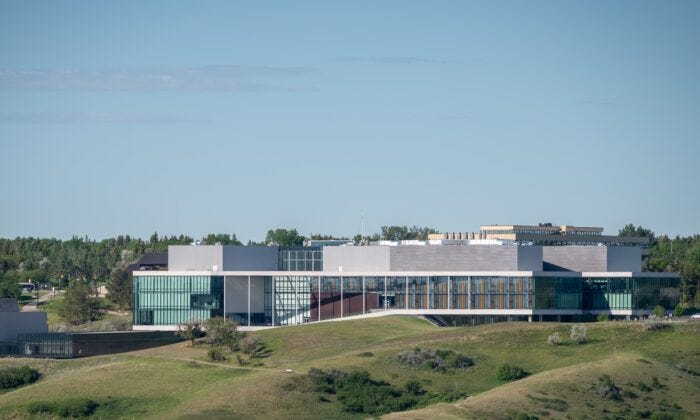The following piece was first published by an international media company on March 9, 2013. It was written by Rodney Clifton, Professor Emeritus of education at the University of Manitoba, a Senior Fellow at the Frontier Centre for Public Policy, and co-editor with Mark DeWolf of the highly acclaimed 2021 collection of original articles From Truth Comes Reconciliation: Assessing the Truth and Reconciliation Commission Report.
The opinion piece focuses on the many key unanswered question surrounding the Truth and Reconciliation Commission (TRC) and the alleged burial of missing children who attended the Indian Residential Schools.
Though nicely crafted, Clifton’s piece published on March 9, 2023 contains the following statement I cannot accept, namely that:
“It is strange that the commissioners never referred her [Doris Young’s] testimony to the proper authorities to be thoroughly investigated. As surprisingly, they never asked other survivors if they saw children being murdered and buried in residential school yards. Even more surprising, the TRC commissioners never called for residential school yards to be searched for possible graves of indigenous students.”
This is not strange at all because the TRC was not allowed to do any of these things according to the terms of reference in Schedule “N” of the official mandate of the 2007 Indian Residential School Settlement Agreement (IRSSA), the largest class-action legal settlement in Canadian history, and one that established the TRC.
Schedule “N’s” terms of reference for the TRC’s deliberations clearly spell out that the Commission was not a formal judicial entity but was formed to allow the various parties to openly express whatever truths they held without fear of interrogation, substantiation, or contradiction, regardless of their accuracy or Canadian legal standing.
Central to the legally binding IRSSA mandate was the provision that the TRC must provide those individuals directly or indirectly affected by the legacy of the Indian Residential School system an opportunity to freely share their stories and/or experiences.
In particular, Schedule “N” states that the TRC: “shall not hold formal hearings, nor act as a public inquiry, nor conduct a formal legal process”; “shall not possess subpoena powers, and do not have powers to compel attendance or participation in any of its activities or events”; “may adopt any informal procedures or methods they may consider expedient for the proper conduct of the Commission events and activities, so long as they remain consistent with the goals and provisions set out in the Commission's mandate statement”; “may, at its discretion, hold sessions in camera, or require that sessions be held in camera”; “shall perform their duties … without making any findings or expressing any conclusion or recommendation, regarding the misconduct of any person, unless such findings or information has already been established through legal proceedings, by admission, or by public disclosure by the individual. Further, the Commission shall not make any reference in any of its activities or in its report or recommendations to the possible civil or criminal liability of any person or organization, unless such findings or information about the individual or institution has already been established through legal proceedings”; “shall require in camera proceedings for the taking of any statement that contains names or other identifying information of persons alleged by the person making the statement of some wrong doing, unless the person named or identified has been convicted for the alleged wrong doing. The Commissioners shall not record the names of persons so identified, unless the person named or identified has been convicted for the alleged wrong doing. Other information that could be used to identify said individuals shall be anonymized to the extent possible”; “shall ensure that the conduct of the Commission and its activities do not jeopardize any legal proceeding”.
Rodney Clifton’s otherwise excellent essay, fails to acknowledge this important provision.
In the interest of encouraging debate on indigenous issues — something the other side refuses to engage in — and given that Clifton is both a close friend and frequent research collaborator, I gave him the opportunity to reply to these introductory remarks which appear below. I ask you, my dear readers, to do so as well:
Of course, I agree with Hymie Rubenstein, my good friend, and U of M colleague. The Truth and Reconciliation Commission (TRC) was not a court of law charged with administering justice. Rather, it was created to examine Indian Residential Schools carefully and judiciously, listen to those involved, both Indigenous and non-Indigenous, and write a report that provided “the truth” and concluding with Calls to Action that will bring about reconciliation.
Contrary to Hymie’s claim, Schedule N did not preclude the Commission from referring specific issues to the proper authorities. For example, if the Commission received information that a group was planning to disrupt a Commission’s public hearing, without a doubt that information would have been sent to the proper authorities to protect people attending the hearing and to protect the Commissioners (See, for example, Schedule “N” 2d, 2k, and 4e).
As well, it was discovered that some law firms were charging their clients more than the negotiated percentage in the Independent Assessment Process, and this behaviour was referred to the proper authorities. As a result, some law firms were investigated, charged, and punished. At least one lawyer was disbarred.
I still wonder why the TRC never referred Ms. Young’s testimony of witnessing a child being murdered in the Anglican Elkhorn Indian Residential School to the police or crown prosecutors for a thorough investigation. Publishing stark incriminating statements in the TRC Report that have not been carefully investigated by the proper authorities is not the way to reach the truth, develop trust, or achieve reconciliation.
Rod Clifton
Keep reading with a 7-day free trial
Subscribe to REAL Indigenous Report to keep reading this post and get 7 days of free access to the full post archives.




